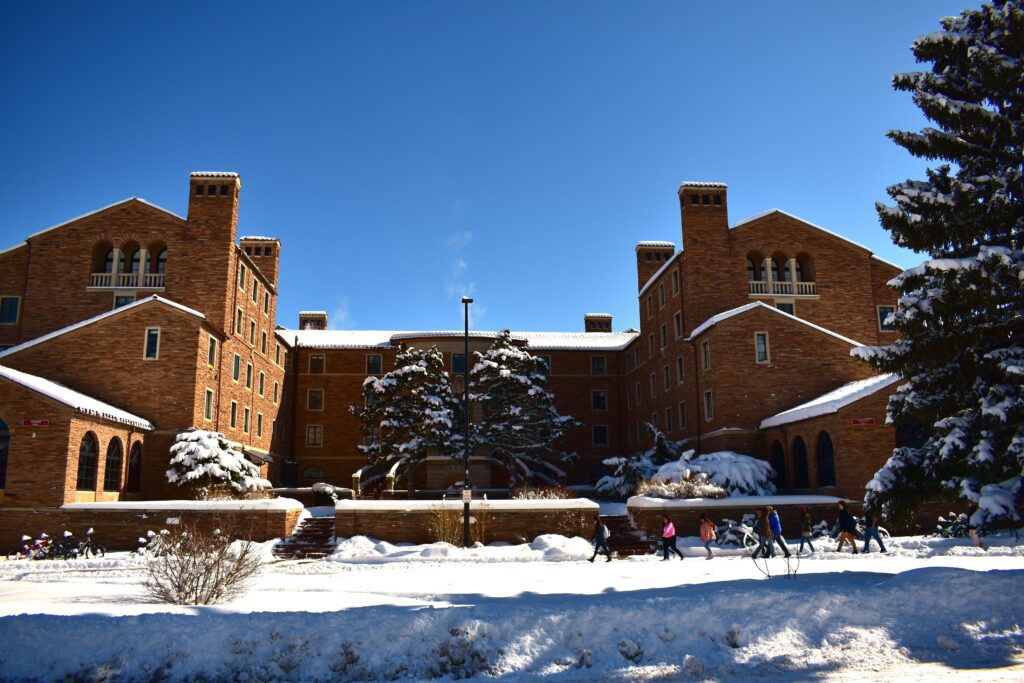
If your eyes glaze over whenever financial metrics are thrown around, take heart — we’re going to keep this relatively high level. But if you’re going to be an informed CU sports fan, you have to have some knowledge of CU’s athletic budget and what that means for what we see on the field, court, or pitch of your favorite sport.
The CU athletic department posted its financial report with the NCAA last week, and it has some fascinating information about the state of the athletic department’s finances, which ties directly to the financial commitment that the school can make to Deion Sanders and his staff.
Here’s the high level athletic department financial breakdown:
| Total Revenue: | $146.6m |
| Total Expenses: | $138.3m |
| Total Profit: | $8.2m |
SO…..Colorado had an $8.2m profit after posting deficits in 5 of the last 6 years. That’s good, right? Right. The Deion Sanders Experiment helped lead the department to a record $146.6m of revenue with over $31.2m of football ticket sales, which is about double the previous school record (!) CU has some of the highest ticket prices in the country, and, as one can guess, this has proven to be helpful to the school’s athletic budget.
These numbers are even more positive when we look at conference media rights distributions. Of the $146.6m of total revenue, media rights distributions were $16.6m. This number is down materially from prior years’ media rights distributions, which were often $20m+. The culprit here is the Pac-12 Conference (RIP-ish). One of the primary components of the Pac-12 Conference’s annual distribution is media rights distributions (in addition to distributions of bowl revenue and NCAA tournament revenue), and these numbers have dropped as the Pac-12’s revenues dropped. Quite simply, media rights revenue will increase materially next year under the umbrella of the Big 12 Conference.
If we look a little deeper at the numbers, though, we’ll see that the total revenue number listed above includes a school record $31.9m in funds from the general university fund. Without those dollars coming from the broader university’s funds, Colorado would have posted record revenue — but not enough to keep up with expenses. CU responded to this reality with a statement:
“Institutional support was provided to help offset shortfalls in conference distributions as well as costs related to legal settlements caused by conference realignment. This support consists predominantly of auxiliary reserves and does not include any tuition or state funds. As we begin a new era in college athletics that is unprecedented in our history, the university will continue to explore long-term funding options for intercollegiate athletics in order to best position CU for success amidst a constantly evolving landscape.”
–Steve Hulbert, CU Athletic Department Spokesperson
For the record, the $31.9m of institutional support is only slightly higher than the $31.89 million provided in 2023. The level of institutional support is not increasing exponentially by any measure. Also, for the record, student fees contribute about $1.6m of revenue to the athletic department budget of $146.6m. Contrast that to, say, Colorado State, where student fees contribute nearly $10m annually to the athletic department budget.

New Challenges and Opportunities
The NCAA’s amateurism model has been hit like a piñata over and over in the court system. To mercifully pop the piñata, the NCAA entered into a settlement with various plaintiffs that will start a “pay for play” model. The lawsuit settlement will permit schools to play players directly for the first time and this puts new pressure on the CU Athletic Department to come up with the money needed to do this. Currently, it is estimated that, starting in 2025, schools will be able to directly pay players $21-23m, which number will equal 22% of the average conference revenue in 2025. This is also about the same amount of money that Ohio State is reportedly paying its players this year.
As CU starts to think about how to address this new expense, CU has cut ties with the 5430 Alliance, the CU-centric collective that was paying CU players for NIL. Rick George, on January 13th, sent an email to donors asking them to send NIL-related donations to the CU athletic department instead of the 5430 Alliance going forward.
According to sources, the 5430 Alliance had an $8m goal for the 2024 football budget. While it is unclear how much money 5430 Alliance actually raised and paid players, it is a pittance compared to the $21-23m that will be needed starting in 2025. The bottom line is that this expense is a brand new expense that the CU Athletic Department will bear, and CU will need to fund the entire $21-23m if it expects to compete at the highest level in college football. According to Jane Slater of the NFL Network, Deion Sanders recently met with Rick George about additional money for NIL and was “met with resistance.”
The pressure to keep up and pay players even led a former Colorado football staffer, Trevor Reilly, to go rogue and travel to Saudi Arabia to seek NIL investments from the Saudi royal family. Reilly terminated his employment shortly thereafter out of frustration (or may have been silently terminated).
Final Thoughts
CU can afford to pay Deion Sanders more. The athletic department had a surplus this year of $8.2m, and the school should anticipate greater media rights distributions in the future.
Unfortunately, though, the new “pay to play” model adds additional material expenses to the athletic department’s expenses. Rick George will need to re-allocate dollars to the players, and for CU to compete at the highest level, he should anticipate funding the full ($21m-23m) settlement cap.
Now, go and re-read Steve Hulbert’s quote above. Hulbert notes that the university will continue to explore funding options for intercollegiate athletics in order to best position CU for success amidst a constantly evolving landscape.
BOOM. That’s the key. That’s the answer. That’s the needed commitment.
You see — CU’s athletics department is the front door of the university, and the impact that Deion Sanders has had on CU cannot be understated. Applications at CU increased 20% in 2024, with more than 68,000 prospective student applications. The Boulder Daily Camera reported that this includes a 50.5% increase in applications from black students. This is remarkable — CU has struggled for decades with recruiting students of color, and the Deion Sanders Effect has been the biggest difference maker in CU’s history in this regard.
Retaining Deion Sanders is absolutely critical to the school, and therefore there needs to be a commitment from the university to increase funding from the general university fund to permit the school to pay and retain Deion Sanders, to pay and retain the assistant coaches and to pay and retain players under the new pay to play model at the full ($21-23m) level. It’s good for the athletic department — but it’s equally good for the underlying institution. So how much can CU pay Deion Sanders? Enough. Enough for him, enough for his assistants, and enough for the players to receive the full House settlement amount.

Well done, John Jr.
— Bowen Street Buffs
Where is our Phil Knight?
Pingback: TUESDAYS ARE FOR THE BOYS! ROAD TRIPS, OHIO STATE, AND MAX’S BOOKIE - BuffsBlog.com
Pingback: THE MOST CRITICAL ISSUE FACING COLORADO’S FOOTBALL FUTURE - BuffsBlog.com